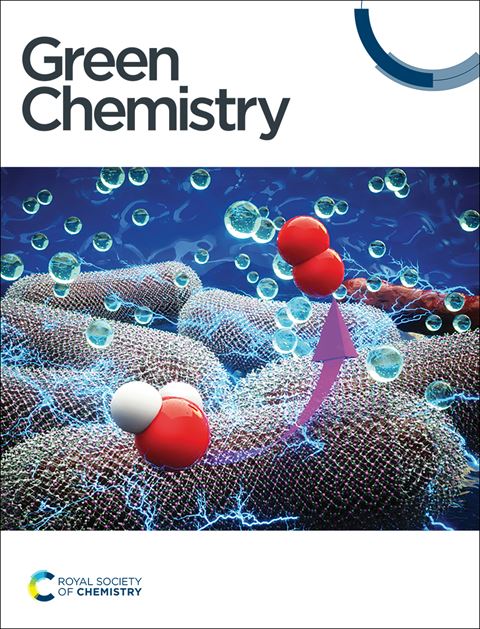Cytoplasmic-peroxisomal spatial combination engineering in Candida tropicalis for enhanced terpenoid production†
IF 9.2
1区 化学
Q1 CHEMISTRY, MULTIDISCIPLINARY
引用次数: 0
Abstract
Metabolic engineering of microorganisms for terpenoid biosynthesis is a green and sustainable alternative to plant extraction and chemical synthesis methods for producing plant-derived natural products. The compartmentalization of pathways or enzymes within organelles is increasingly recognized for its potential to eliminate metabolic crosstalk and enhance pathway efficacy in terpenoid production. However, the physicochemical environment of a given organelle may not meet the requirements for multiple enzymes. Here, a cytoplasmic-peroxisomal spatial-combination strategy was developed in Candida tropicalis to enhance terpenoid production. This strategy involved compartmentalizing the pathway from acetyl-CoA to mevalonate (MVA) within the cytoplasm and the subsequent steps from MVA to terpenoids within the peroxisome. Furthermore, we demonstrated that the pathway developed in this study is more effective because it provides optimal conditions for enzymes, and the use of the peroxisome membrane as a barrier to concentrate farnesyl diphosphate and geranylgeranyl pyrophosphate within the organelle. Additionally, we observed that this strategy efficiently enhanced productivity and was applicable to sesquiterpenoid, diterpene, and tetraterpenoid biosynthesis. Finally, under 5-L fed-batch fermentation, the titers of β-carotene and miltiradiene reached 9.9 g L−1 and 4.2 g L−1, respectively. This study provides new insights into terpenoid biosynthesis in yeast.

热带假丝酵母细胞质-过氧化物酶体空间组合工程提高萜类化合物产量
微生物代谢工程合成萜类化合物是一种绿色、可持续的替代植物提取和化学合成方法生产植物源性天然产物的方法。细胞器内途径或酶的区隔化因其消除代谢串扰和增强萜类化合物生产途径功效的潜力而日益得到认可。然而,一个给定的细胞器的物理化学环境可能不满足多种酶的要求。本文研究了热带假丝酵母细胞质-过氧化物酶体的空间组合策略,以提高萜类化合物的产量。该策略包括细胞质内从乙酰辅酶a到甲羟戊酸(MVA)的途径以及随后从MVA到过氧化物酶体内萜类化合物的步骤。此外,我们证明了本研究中开发的途径更有效,因为它为酶提供了最佳条件,并利用过氧化物酶体膜作为屏障在细胞器内浓缩法尼基二磷酸和香叶基焦磷酸。此外,我们观察到这种策略有效地提高了生产效率,适用于倍半萜类、二萜类和四萜类生物合成。最后,在5 L补料分批发酵条件下,β-胡萝卜素滴度达到9.9 g L−1,米地拉啶滴度达到4.2 g L−1。本研究为酵母中萜类化合物的生物合成提供了新的见解。
本文章由计算机程序翻译,如有差异,请以英文原文为准。
求助全文
约1分钟内获得全文
求助全文
来源期刊

Green Chemistry
化学-化学综合
CiteScore
16.10
自引率
7.10%
发文量
677
审稿时长
1.4 months
期刊介绍:
Green Chemistry is a journal that provides a unique forum for the publication of innovative research on the development of alternative green and sustainable technologies. The scope of Green Chemistry is based on the definition proposed by Anastas and Warner (Green Chemistry: Theory and Practice, P T Anastas and J C Warner, Oxford University Press, Oxford, 1998), which defines green chemistry as the utilisation of a set of principles that reduces or eliminates the use or generation of hazardous substances in the design, manufacture and application of chemical products. Green Chemistry aims to reduce the environmental impact of the chemical enterprise by developing a technology base that is inherently non-toxic to living things and the environment. The journal welcomes submissions on all aspects of research relating to this endeavor and publishes original and significant cutting-edge research that is likely to be of wide general appeal. For a work to be published, it must present a significant advance in green chemistry, including a comparison with existing methods and a demonstration of advantages over those methods.
 求助内容:
求助内容: 应助结果提醒方式:
应助结果提醒方式:


